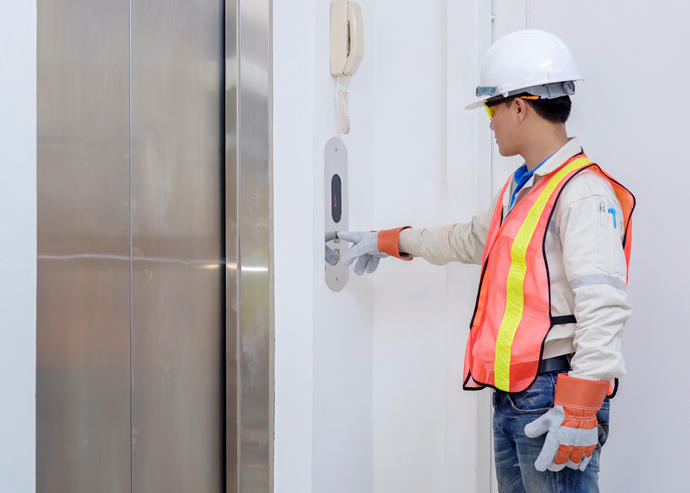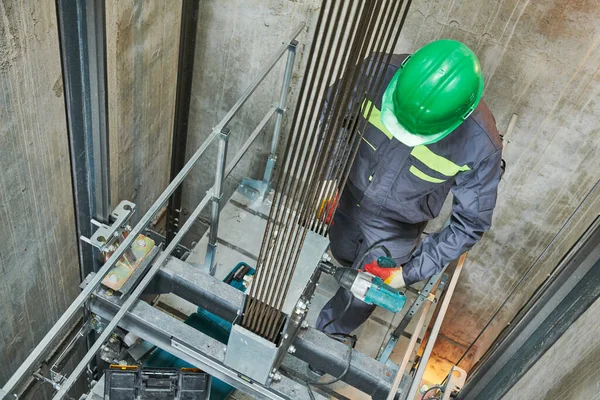Checking Out the Comprehensive Actions Needed for Lift Maintenance
In the realm of building maintenance, ensuring the appropriate functioning and safety of lifts is extremely important. By addressing crucial facets such as positive upkeep routines, safety and security checks, and emergency situation readiness, a detailed understanding of the details involved in lift maintenance can lead to boosted effectiveness and safety and security.
Routine Inspections
When it concerns guaranteeing the durability and safety of your lift system, normal assessments are extremely important. These regular checks play an essential duty in identifying any potential concerns prior to they rise into significant issues, making certain the safe and smooth operation of the lift. By performing regular evaluations, upkeep groups can proactively attend to damage, faulty components, or any other problems that may compromise the lift's performance or security.
During these inspections, trained experts completely check out numerous aspects of the lift system, consisting of mechanical components, electric systems, security functions, and overall architectural integrity (lift engineer). They search for indications of wear, rust, leakages, or any anomalies that can suggest an issue. Furthermore, they confirm that all safety and security mechanisms are working properly and in conformity with guidelines. By detecting and resolving concerns at an early stage, these evaluations aid prevent costly repair services, downtime, or safety and security risks, eventually prolonging the lifespan of the lift system and guaranteeing the wellness of its customers.
Aggressive Upkeep Schedules
Implementing aggressive upkeep timetables is important for taking full advantage of the performance and longevity of lift systems. By adhering to a positive maintenance approach, lift proprietors can resolve possible problems before they escalate right into major issues, inevitably minimizing downtime and expensive repair services. Proactive upkeep entails routine assessments, lubrication of relocating parts, testing safety functions, and changing worn components. These arranged maintenance tasks not just help in stopping malfunctions yet additionally add to keeping the lift's efficiency at optimal degrees.
A well-structured proactive upkeep schedule must detail particular tasks, regularities, and responsible workers. When creating these routines to guarantee the lift operates safely and efficiently, it is important to follow producer referrals and sector requirements. In addition, recording maintenance activities and keeping detailed documents can supply important understandings right into the lift's performance gradually, helping in recognizing trends and making educated maintenance choices.

Safety And Security Conformity Checks
Making certain security compliance with complete checks is critical in maintaining lift systems' integrity and securing customer health. Security compliance checks include a detailed examination of various parts, including electrical systems, mechanical components, emergency brakes, doors, and various other crucial safety and security attributes. These checks are important to recognize any kind of potential hazards or malfunctions that could jeopardize the lift's operation and put individuals at risk.
Regular security conformity checks need to be performed by certified technicians in adherence to sector guidelines and standards. These checks assist in finding problems early, enabling prompt fixings find and precautionary maintenance steps to be carried out. Keeping in-depth records of security conformity checks is important for tracking the lift system's efficiency over time and demonstrating conformity with safety and security guidelines.
Tools Upgrades and Modernization
Enhancing lift systems through tools upgrades and modernization is crucial for boosting effectiveness and security criteria in vertical transport. As innovation developments, older lift systems may come to be out-of-date, resulting in lowered dependability and prospective safety and security dangers. By purchasing equipment upgrades and modernization, building owners can make sure that their lifts meet existing industry standards and guidelines.

Along with operational advantages, devices upgrades and innovation projects can also enhance the appearances of the lift, giving an extra appealing and contemporary experience for guests. Inevitably, buying lift upgrades and innovation is a proactive technique towards guaranteeing the long life, security, and performance of vertical transportation systems.
Emergency Situation Preparedness Planning
An efficient emergency situation preparedness strategy is critical for making certain the safety and security and speedy action in instance of unexpected incidents anonymous entailing lift systems. Emergency situation preparedness preparation for lift systems includes a systematic strategy to reduce dangers, guarantee traveler safety and security, and decrease downtime during emergency situations.
Key elements of an emergency readiness prepare for lifts consist of clear interaction procedures, regular training for lift operators on emergency situation procedures, and routine drills to test the effectiveness of the strategy. lift and engineering services. Additionally, the plan should lay out certain functions and obligations for all stakeholders entailed, consisting of structure administration, upkeep employees, and emergency situation -responders
In case of a lift malfunction or entrapment, having a distinct emergency plan can help why not find out more in coordinating a efficient and timely action to make sure the security and wellness of passengers. Timely interaction, accessibility to emergency devices such as interaction devices and emergency illumination, and expertise of discharge procedures are essential aspects of a detailed emergency preparedness plan for lift systems. By prioritizing emergency preparedness planning, structure supervisors can improve the general safety and dependability of their lift systems.
Final Thought
Finally, the thorough measures required for lift upkeep include normal evaluations, aggressive upkeep schedules, security compliance checks, tools upgrades and innovation, and emergency situation preparedness preparation. These steps are crucial for making certain the security, dependability, and efficiency of lifts in different setups. By implementing these steps, lift proprietors can minimize the threat of crashes, extend the life-span of their tools, and abide by industry laws.

Throughout these evaluations, educated professionals extensively take a look at numerous elements of the lift system, consisting of mechanical components, electric systems, safety and security functions, and overall architectural honesty.Guaranteeing safety and security conformity via detailed checks is critical in keeping lift systems' reliability and guarding customer wellness. Maintaining comprehensive records of safety and security compliance checks is critical for tracking the lift system's performance over time and showing compliance with security regulations.
By focusing on emergency situation preparedness planning, structure supervisors can enhance the total safety and dependability of their lift systems.